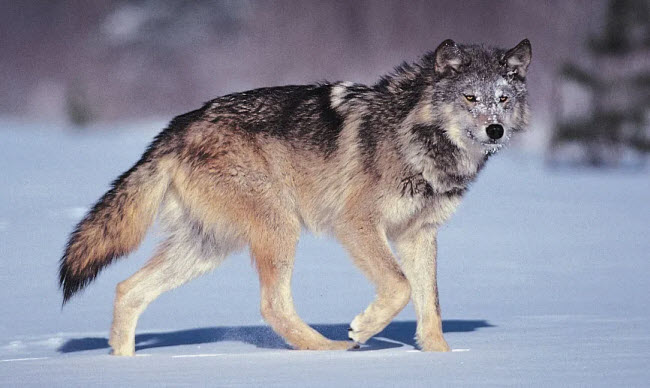The wolf is a mammal found across Eurasia and North America, recognized as the largest member of the Canidae family. Unlike some of its relatives, wolves have less prominent ears, a shorter trunk, and an exceptionally long tail. These social animals hunt in packs, preying on large hoofed mammals as well as smaller animals and livestock. Wolves have a long history of interaction with humans, often being hunted in pastoral societies due to their attacks on livestock. However, they are respected in some agricultural and urban communities, where they are sometimes adopted as iconic symbols. Despite widespread fear of wolves, most recorded attacks on humans are attributed to rabid animals, as healthy wolves rarely attack humans. They tend to avoid people, developing a natural fear due to their encounters with hunters, livestock owners, and shepherds.
There are many stories about wolves being “wild dogs” and potentially domesticated. While wolves and dogs share many biological traits, they differ significantly in other aspects. Dogs are bred as pets and companions, whereas wolves remain wild animals and should be treated as such. Occasionally, wolves and dogs interbreed, resulting in wolf-dog hybrids, but these hybrids are generally not well-suited as pets. Another myth is that some dog breeds, like the husky, are part wolf.
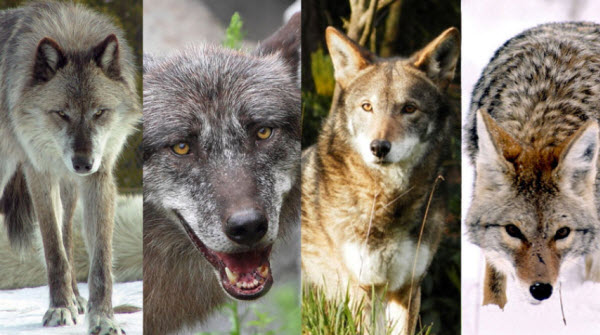
Physically, wolves vary by species. The Ethiopian wolf, for instance, weighs about 11 kilograms, while northern gray wolves, such as tundra and Arctic wolves, can weigh up to 62 kilograms. North America is home to two species: the gray and red wolves. The gray wolf is the most widespread, inhabiting parts of the United States, Canada, Europe, and Asia, and is subdivided into several subspecies, including Arctic wolves and the Australian dingo, which can live in almost any habitat, from deserts to tropical forests. Ethiopian wolves, on the other hand, are found only in the Ethiopian Highlands.
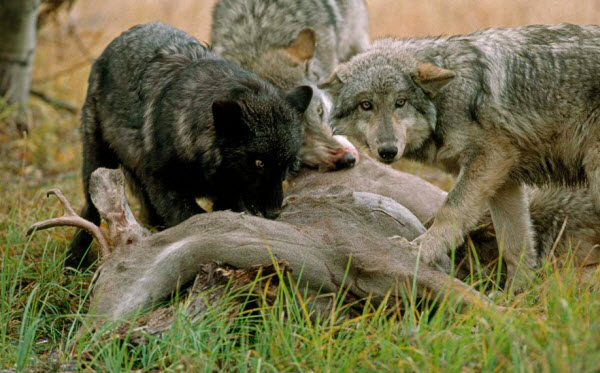
Wolves are incredibly adaptable creatures. Historically, they inhabited almost all of North America, Northern Europe, East Africa, and Asia, withstanding extreme temperatures ranging from -50 to 48.8 degrees Celsius. They are adept runners, climbers, jumpers, and swimmers, depending on their habitat and prey. Their territories can range from 103 to 2,590 square kilometers, and they typically avoid human contact, staying as distant as possible.
Wolves are almost exclusively carnivorous, feeding on prey ranging from rodents to musk oxen. Observers have noted that while wolves in the wild might eat birds, they prefer larger prey such as goats, sheep, or deer. They work as a team to attack these large herds, often targeting the elderly, young, or sick individuals because they are easier to kill. When they find food, they eat as much as they can, as they might not eat again for several days. Wolves are highly effective predators with incredibly strong jaws capable of biting through even the toughest hides and breaking bones with a few bites.
Puppies are born in dens, which can be located underground, in grass, caves, burrows, hollow logs, or fallen trees. They can be moved between dens as needed during their growth. In the first four weeks, they nurse from their mother or one or more other females in the pack. All pack members contribute to babysitting duties. From an early age, puppies learn the complex wolf language used for communication through visual, tactile, and auditory means, taught by all members of the pack. At 5 to 10 weeks old, they begin to eat regurgitated food from pack members, and by 10 weeks, they are ready for solid food. At six months, they join the adults in hunting, and by the age of two, they are considered mature.
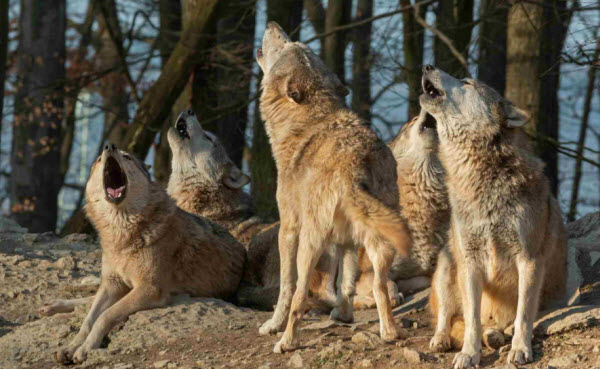
Wolves live in family groups called packs, usually consisting of a breeding pair (alpha male and female) and their offspring, averaging between 8 to 9 members, though some packs can contain up to 20 to 30 wolves. Pack members follow the alpha pair, who lead the group in hunting and establish territorial boundaries through scent marking and howling. Packs often engage in boundary disputes with other packs, marking their territory through continuous patrolling and vocalizations.
Like dogs, wolves can snarl and growl to indicate aggression or threat, or raise their tails to show increased interest or anxiety. They might lower their bodies and tails or roll onto their backs as a sign of submission to other pack members. Flattening their ears against their face can signal caution or anxiety. Wolves communicate through scent marking, leaving urine and feces on trees or rocks, and through vocalizations including howls, growls, whines, and barks. Despite the emotional and mournful impression of howling, it is actually a celebratory act, with wolves enjoying the communal music of howling. When one wolf starts howling, others join in, creating a chorus that can last over a minute, a ritual that fosters unity and community spirit.
Wolves howl upon waking from long naps, to gather the pack before hunting, and after intense play or social interactions. Howling also serves to convey messages, maintain contact when separated, warn other wolves to stay away, establish boundaries, and indicate locations. Sometimes, wolves howl simply for enjoyment.
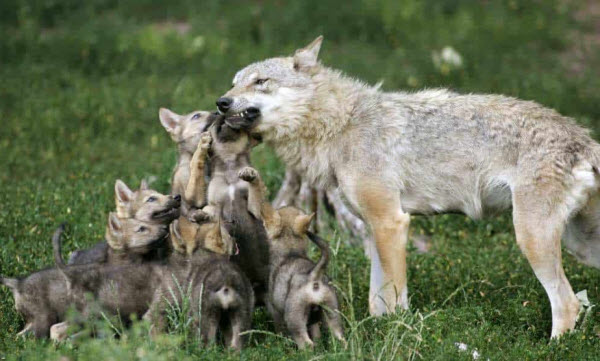
The origins of wolves date back around six million years, with small, fox-like carnivores in North America evolving into larger predators weighing up to 45 kilograms. These early wolves began living in packs, and the gray wolves thrived, becoming one of the most widespread wild mammals on Earth alongside humans. They migrated across the Bering Strait into the Far East, Russia, and Europe before returning to North America. However, due to increasing human populations and perceptions of wolves as competitors for food and threats to human safety, extensive bounties were placed on them, leading to a steady decline in their numbers.
Gray Wolves: Gray wolves now occupy only a small fraction of their former range. In the United States, persecution continued until the 1970s, leaving only 500 to 1,000 wolves. Their numbers have decreased by 95% in Canada and they have been completely eradicated in Mexico. Today, large wolf populations are restricted to remote and wild areas like the Arctic.
Red Wolves: The last wild population of red wolves lived in the coastal prairie swamps of Louisiana and Texas. Although they were nearly eradicated, red wolves received a second chance through reintroduction efforts in wildlife refuges in eastern North Carolina, with fewer than 150 individuals remaining. Red wolves are also present in several zoos as part of managed breeding programs in the U.S. and Canada, with hopes of reestablishing new safe areas for this species.
Ethiopian Wolves: The critically endangered Ethiopian wolves are losing their mountain habitat to agricultural expansion and commercial livestock grazing. Rabies outbreaks have further reduced their numbers. They are currently fully protected in Ethiopia, with laws that could result in up to two years in prison for killing one, and vaccination campaigns for dogs near wolf areas to prevent disease transmission.
Identification Card
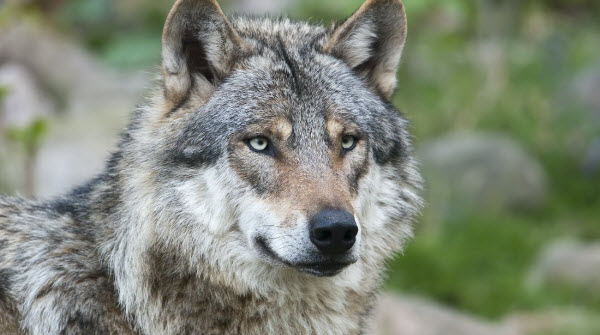
- Class: Mammals
- Order: Carnivores
- Family: Canidae
- Genus: Canis
- Lifespan: 13 to 15 years
- Gestation Period: 9 weeks
- Birth Weight: 0.45 kilograms
- Maturity: 9 months
- Length: The largest species, the gray wolf, measures 87 to 130 cm, while the smallest, the Ethiopian wolf, measures 84 to 101 cm. Males are generally larger than females.
- Weight: The heaviest is the gray wolf, weighing up to 62 kg, while the lightest is the Ethiopian wolf, weighing between 11 and 19 kg.
- Tail Length: 29 to 52 cm
Quick Facts About Wolves
- Wolves can consume up to 9 kilograms of food in one sitting.
- During a hunt, wolves can reach speeds of up to 61 kilometers per hour.
- In the Arctic tundra, a wolf’s howl can be heard up to 16 kilometers away.
